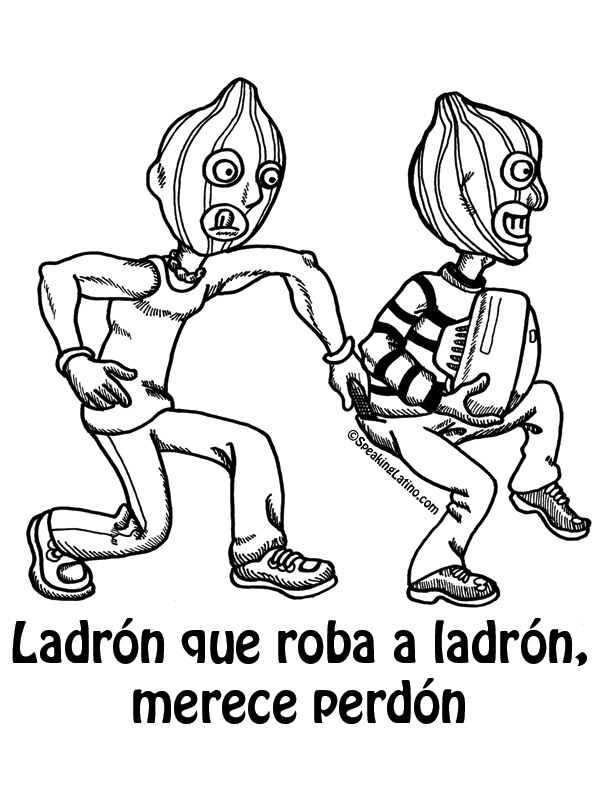Sayings: what it is, main characteristics, proverb structure and more
Contents
What is a saying?
A proverb is a saying whose use has spread among different communities or regions, so that it can be defined as a type of popular saying that aims to convey an instructive message, a moral message or a teaching through which an intellectual and moral reflection takes place.

The saying is one of the most important and well-known types of oral literature, as they continue to be used from generation to generation and it is possible to apply them to a wide variety of situations. In fact, proverbs are one of the most used sayings in everyday speech, which is why they may appear in various artistic manifestations, for example.
Main characteristics of a saying
Proverbs can be located and even identified by the area in which they are used, the language or the subject, as they usually come from the experience of wise or older people who were promoting the use of these sayings from generation to generation with the teaching of younger generations. Let’s see below the most important characteristics of the proverb:
Remote origin
While it has been complex to calculate the moment in which many types of oral literature emerged, it is even more complex to recognize that of the proverb. However, many experts agree that after tracing this type of saying, it can be traced back to Middle Eastern culture, where the first sayings appear in the Bible and even in Greco-Latin literature. It will also make its appearance in works that are part, later on, of important moments of literature, such as Spanish literature with poems like the Cantar del Mio Cid.
Importance of experience
Now, regarding the composition and the message sent by the proverb, we have that it arises from experience. In this way, when a proverb is expressed, it can also be seen as sending a message, an advice or generating a reflection on a certain topic.
Belonging and culture
Many of the sayings we know today arise from the experience not of a sage or elder, but of the community in general, so that they are also an important part of the cultural content of a group of people. Thus, many of them are collectively installed and used from generation to generation.
Use of language
An important point to consider about the proverb is that it has an extremely simple language. In fact, as we will see further on in terms of its composition, some of them use rhyme, which makes it easier for the transmitter to memorize the fragment and with it, the diffusion. Thus, the saying uses popularly known terms, words that are part of everyday speech and can be easily understood by any member of the community.
Another important aspect, and considering the impossibility of tracing their origin, has to do with the authors or creators of this type of sayings. They are so old and have been so rapidly spread that it is not possible to identify an author, especially when we refer to these initial sayings that have been transmitted over long generational periods.
Ease of application
Due to the composition and message that a saying conveys, it is a saying that can be applied anywhere in the world, even in other languages and remote regions, since it is a cultural element that has spread, in many cases, in morals and that seeks the preservation of virtues, behaviors, the transmission of teachings, entertainment, etc.

Structure of the saying
As for the form in which this type of saying is structured, we find that it follows a prose composition, so that it is constructed according to the natural form of language for expression. However, we have also found sayings that are organized in verse, also close to several figures of literature, such as parallelism, ellipsis or antithesis.
The composition of the proverb is characterized mainly because it is a short structure and extension that also facilitates memorization, which facilitates perpetuation within orality.
Example of a saying
After seeing what a saying consists of and its most important characteristics, let’s look at one of the most popular sayings that you have surely heard:
No matter how much you get up early, the sun rises early.
This particular saying indicates that sometimes things are not subject to our own efforts, that is, they do not even depend on the strength we put into them, but circumstances can intervene in them, taking away any power over situations or events.
How to write a saying
Although the saying is distinguished by its popular and traditional use, it is possible to construct new sayings that adapt to the context of development, region or generation, even. Let’s look at some key aspects to consider when constructing a saying:
Remember that the saying is a short expression, thus, we must stick to one line if we are going to write it. Find a way for the words you use to contain a simple rhyme. The key is to look for a short teaching that we can apply to different circumstances, either moral or with a strong message that is reflective for the listener.
Many of the sayings that exist are pronounced when there is an implicit experience that sticks very well to reflection, so a good way to create a saying would be yielding to some anecdote from which we had an important learning.
If you want to know more about other types of oral literature, we invite you to continue browsing this section, where we tell you much more about them. Also, in our literature section you can find much more information about the literary world, its manifestations, movements, genres and more.
